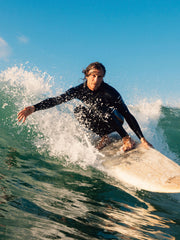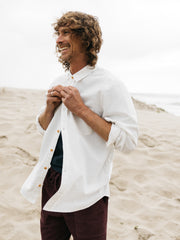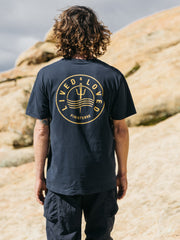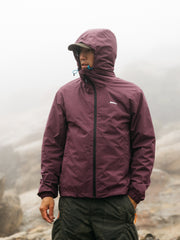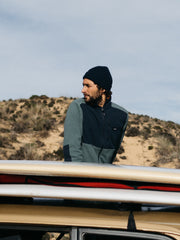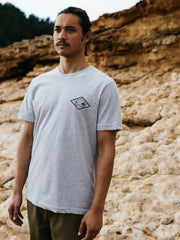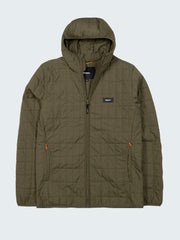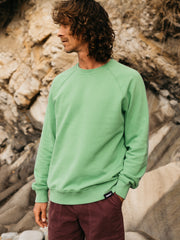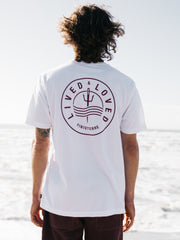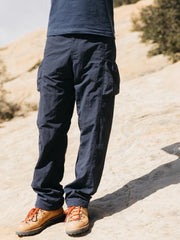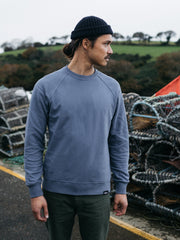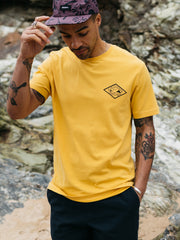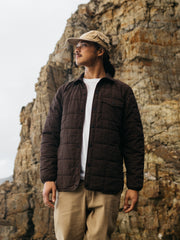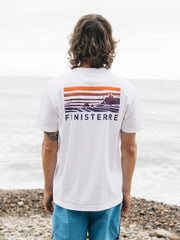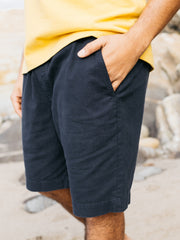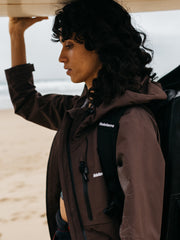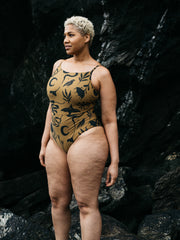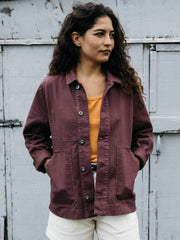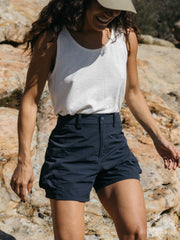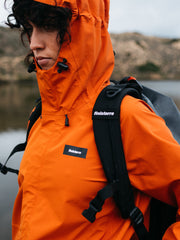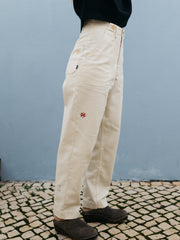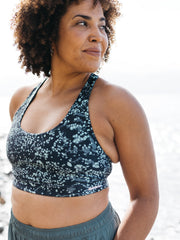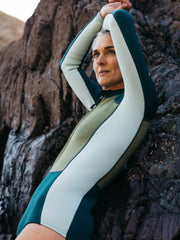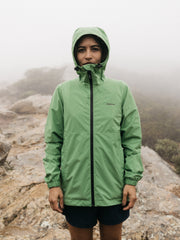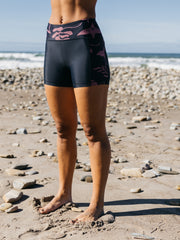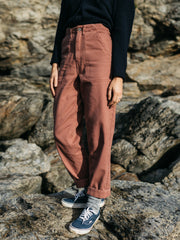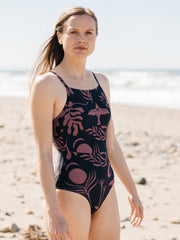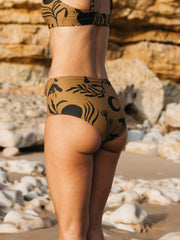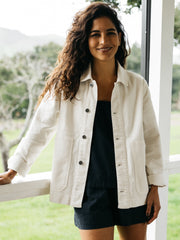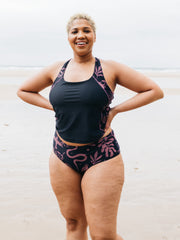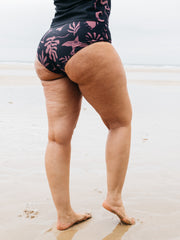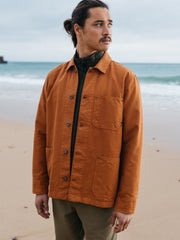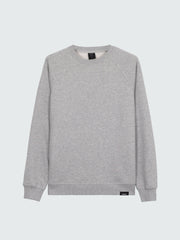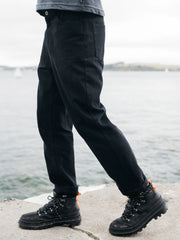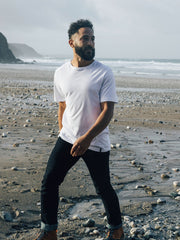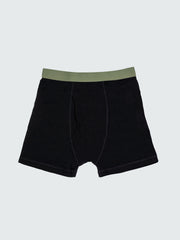An artist, designer, sign painter and woodworker, we met up with surf industry stalwart Jeff Canham during our latest trip. From growing up on Oahu, Hawaii, to his time as Artistic Director at Surfer Magazine we sat down to talk about his career, his passion for colour and how he’s seen surf culture develop.
Jeff Canham: Colour & Culture
03.05.24
5 min read
Jeff Canham, interviewed by Zak Rayment
Photogaphy by David Gray & Dylan Gordon
Colour is a huge part of your work, from your signwriting to the bright cacti sculptures that emerge from your woodworking shop. Why do you gravitate towards vibrant colours and how did that become such a central part of your practice?
Colour seems to be the first thing people respond to. Before you read the words or process the shapes, colour sets a tone and gives the work a feeling. I think about colour in the same way that I think about typography. With typography you can tell someone as much with the lettering you choose as you can with the words. And you often digest the lettering first. The same is true for colour. It may feel warm, or cool, or 80s, or whatever the thing is, and you respond to that immediately whether consciously or not, so it’s a crucial part of my creative process.
Growing up in Hawaii had a big impact on the colours I gravitate towards as well as the design I’m interested in. I was surrounded by bold, unabashed colour combinations and great mid-century typography. I love all the old hotel and apartment signs there and the bright colours that the sun has taken the edge off of. The warm, slightly faded palette that shows up in a lot of my work is a familiar, comfortable place for me.
I’m drawn toward those same things here in San Francisco now where there is no shortage of wonderful, old hand-painted signs. There are outlandishly painted Victorian houses, old advertisements for bygone products everywhere you turn, and the natural beauty of the bay. All of which inspire me.
You mentioned growing up in Hawaii. What was that experience like and how crucial was it in forming your relationship with surfing and the ocean?
Surfing and a reverence for the ocean are so ingrained in the culture of Hawaii that it feels like a given that it will play a part in shaping a person there. Like most kids in Hawaii, the beach was where we went for recreation. I started off playing in the shore break with my friends, eventually grabbed a boogie board, and ultimately graduated to riding a surfboard. Thankfully I’ve stuck with it.
I was just back on Oahu this past week and on my last day there a storm was approaching. The winds kicked up but some old friends and I met at a small, protected cove to try and find some shelter and a few waves. We walked down to the beach and were immediately stung by a sandstorm and hid in our towels. Boogie boards were blowing across the sand like tumbleweeds. But the water was clear and turquoise so we took refuge there. There wasn’t a whole lot in the way of surf and we spent most of our time floating in the cool water and catching up on each other’s family and work and whatever else came up, occasionally turning around mid-conversation to catch a wave.
The conditions on land weren’t hospitable, but we still went out of our way to get in the water and spend time together. I’m almost 50 and I’m still playing in the shore break with my friends. It was a perfect sendoff and a nice reminder of how integral the ocean is there.
You also work closely with the Hawaii-based musician Jack Johnson to produce his artwork - how did that partnership come about?
I say yes to whatever projects Jack and his wife Kim throw my way. I am continually impressed and inspired by the initiatives they spearhead and our interests and ethics align nicely so I’m happy to be involved in whatever they’ve got going on.
We met years ago through a mutual friend, Emmett Malloy, who founded Brushfire Records with Jack in 2002. I think I did a concert poster first and then they just kept sending projects my way and we’ve been working together ever since. Jack and Kim have their hands in so many positive, forward-thinking projects (a learning farm on Oahu’s north shore, a campaign to reduce plastic waste in the music industry, and a farm-to-school educational program to name just a few) and they are really dialled into their community.
I’m stoked to be involved in all of it and when I feel good about the projects I’m working on and the people I’m working for, which I clearly do in Jack’s case, the creative process is usually fun and easy so it’s a win-win situation. And Jack is still an incredible surfer which always goes a long way in my book. He rips in and out of the water and success couldn’t have happened to a better person.
You spent a few years as Art Director at Surfer Magazine. How was that experience and was there a particular feature or issue you worked on that you remember most fondly?
I grew up subscribing to Surfer Magazine and David Carson, the former art director, was / is one of my design heroes, so working there was a dream job for me. My first day on the job back in the late 90s brought me to Art Brewer’s studio where he was shooting an ad campaign with Greg Noll and I was over the moon getting to work alongside these giants of the surf world.
When I reflect back on my time there it isn’t the work I did that really stands out to me, it’s the people that I got to interact with that seem special. Some of them have now passed on and others that were just kids at the time are now some of the best surfers in the world. So many legends of the sport came through that office and I got to shake their hands and hear their stories first-hand. To think that I had a small part in presenting their experiences and shaping their narratives still seems so cool to me.
Through your time at Surfer and beyond, you’ve been deeply embedded in surf culture for decades and some would say have greatly influenced it yourself. How have you seen surf culture change since your time working at Surfer?
When I first started working in the surf world, the industry was pretty homogeneous. While there were some unconventional pockets on the fringes doing innovative things, they didn’t have much of a platform. Now when I look around, there are all kinds of voices and all sorts of niches readily available in the surf world. You can find a community for whatever type of board you ride and whatever kind of surfer you want to be. It isn’t unique to San Francisco, but there is every type of person in the water here… old, young, rich, struggling, queer, straight, whatever. Surfing is a great equaliser that way.
The diversity of the people riding waves, and the variety of equipment they choose to do it with, shapes the culture outside of the water. Independent brands and shops pop up to serve these communities and they bring along their unique voices and perspectives with them. They’re making cool t-shirts and putting on art shows or hosting events, making surf culture what they want it to be. And because surf culture isn’t confined to a handful of monthly magazines or your local shop anymore, you can find these voices and connect with your people pretty easily.
The industry still has a ways to go, but I like the direction.




